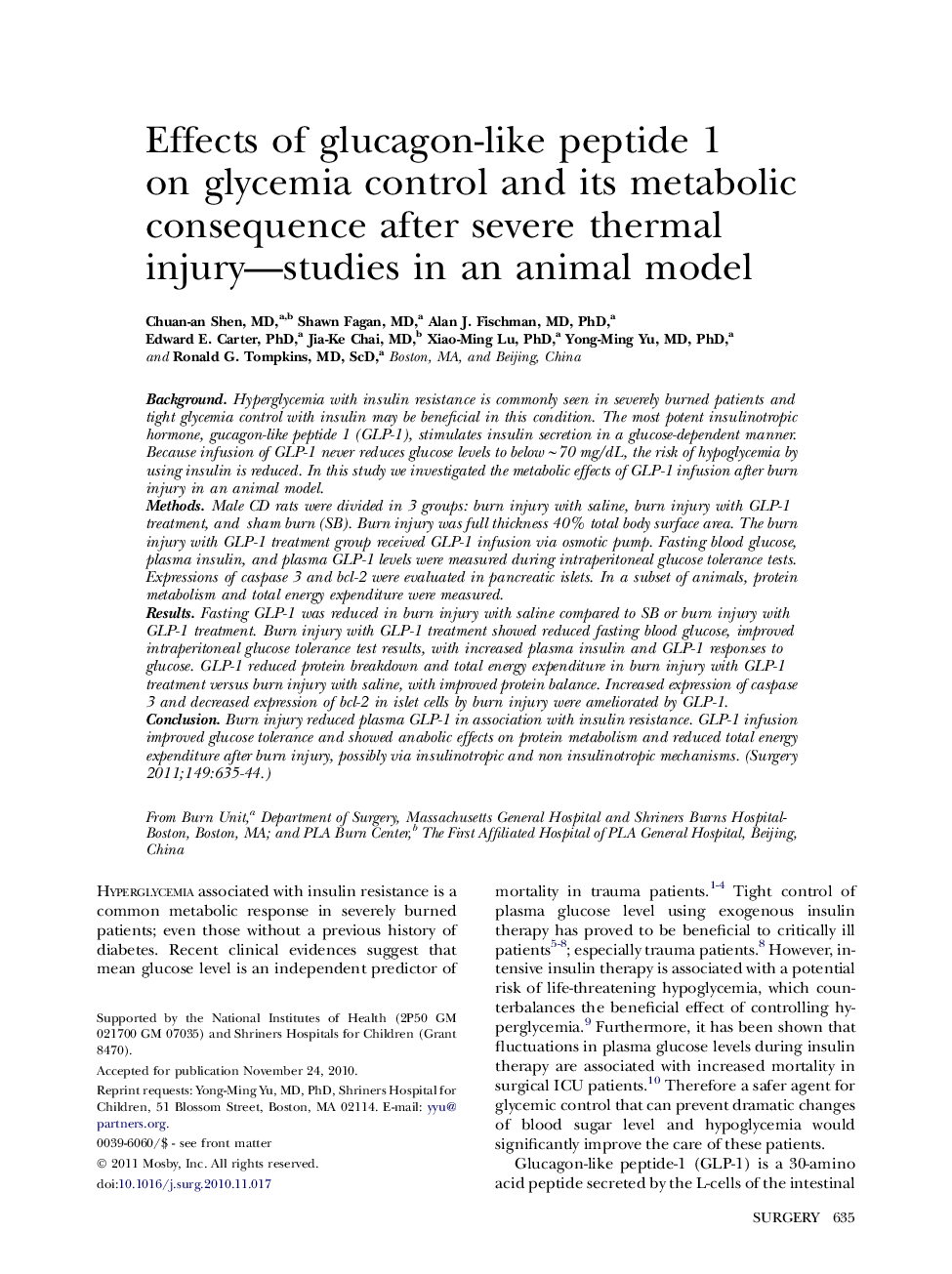| Article ID | Journal | Published Year | Pages | File Type |
|---|---|---|---|---|
| 4308033 | Surgery | 2011 | 10 Pages |
BackgroundHyperglycemia with insulin resistance is commonly seen in severely burned patients and tight glycemia control with insulin may be beneficial in this condition. The most potent insulinotropic hormone, gucagon-like peptide 1 (GLP-1), stimulates insulin secretion in a glucose-dependent manner. Because infusion of GLP-1 never reduces glucose levels to below ∼70 mg/dL, the risk of hypoglycemia by using insulin is reduced. In this study we investigated the metabolic effects of GLP-1 infusion after burn injury in an animal model.MethodsMale CD rats were divided in 3 groups: burn injury with saline, burn injury with GLP-1 treatment, and sham burn (SB). Burn injury was full thickness 40% total body surface area. The burn injury with GLP-1 treatment group received GLP-1 infusion via osmotic pump. Fasting blood glucose, plasma insulin, and plasma GLP-1 levels were measured during intraperitoneal glucose tolerance tests. Expressions of caspase 3 and bcl-2 were evaluated in pancreatic islets. In a subset of animals, protein metabolism and total energy expenditure were measured.ResultsFasting GLP-1 was reduced in burn injury with saline compared to SB or burn injury with GLP-1 treatment. Burn injury with GLP-1 treatment showed reduced fasting blood glucose, improved intraperitoneal glucose tolerance test results, with increased plasma insulin and GLP-1 responses to glucose. GLP-1 reduced protein breakdown and total energy expenditure in burn injury with GLP-1 treatment versus burn injury with saline, with improved protein balance. Increased expression of caspase 3 and decreased expression of bcl-2 in islet cells by burn injury were ameliorated by GLP-1.ConclusionBurn injury reduced plasma GLP-1 in association with insulin resistance. GLP-1 infusion improved glucose tolerance and showed anabolic effects on protein metabolism and reduced total energy expenditure after burn injury, possibly via insulinotropic and non insulinotropic mechanisms.
